If you’re under the age of about 35, chances are you’ve probably never ever seen a leaded pump at the gas station. And for good reason. Now we know that leaded gas poses health and environmental risks, which is why it was phased out. But before the 1970s, just about every car on the road in America was powered by it.
So why was lead in there in the first place? It’s complicated, and at the time, it was about innovation.
At the outset of the 1920s, America was beginning its torrid love affair with the automobile. And as auto manufacturers looked for ways to squeeze power and performance out of their thundering 26 horsepower engines, researchers turned their attention to the contents of their fuel tank for inspiration. Engines back then had problems with knocking: a randomly occurring uncontrolled combustion that negatively affected performance as much as it unnerved drivers. The cause? Low-quality gasoline. Back in the 1920s, gasoline had an octane rating of between 40 and 60 – a far cry from today’s 87 – making it way more volatile in the confines of an internal combustion engine and far less consistent in performance.
The simple answer was that automobiles needed to improve the octane rating of gasoline which could be done by either refining the gas further (more expensive) or by identifying the right set of additives (way cheaper). So, they call in the guys in lab coats, who do experiments with things like hydrocarbon chains, compression variables, and auto ignition temperatures (you were paying attention in science class, right?) While a number of different additives were considered (including Ethanol, which was not in abundant supply at the time), a complicated little compound called tetraethyl-lead won out, primarily due to cost, availability and the persuasiveness of the people who developed it. By 1963 “Ethyl” (as it was nicknamed) and other lead-based anti-knock agents were present in 98% of the US gasoline supply.
For nearly half a century of auto culture, leaded gas ruled the American road, keeping octane ratings up and engine knock to a minimum. Then on November 28, 1973, the EPA required a nationwide phase-out of lead in all grades of gasoline, which not only helped reduce a growing public health risk, but also challenged the American auto industry to innovate. The result was better refining processes, more environmentally-friendly additives and the big one: the catalytic converter. Even though leaded gas is still used in some racing circuits and in private aviation today, it represents a minuscule portion of gasoline used today. Which is a really good thing.


Don't miss out on new content
Thanks for signing up. Set your password and start earning reward points for everything you do on the site.
You already have a Team Valvoline account. Sign in here.
Did you forget your password?